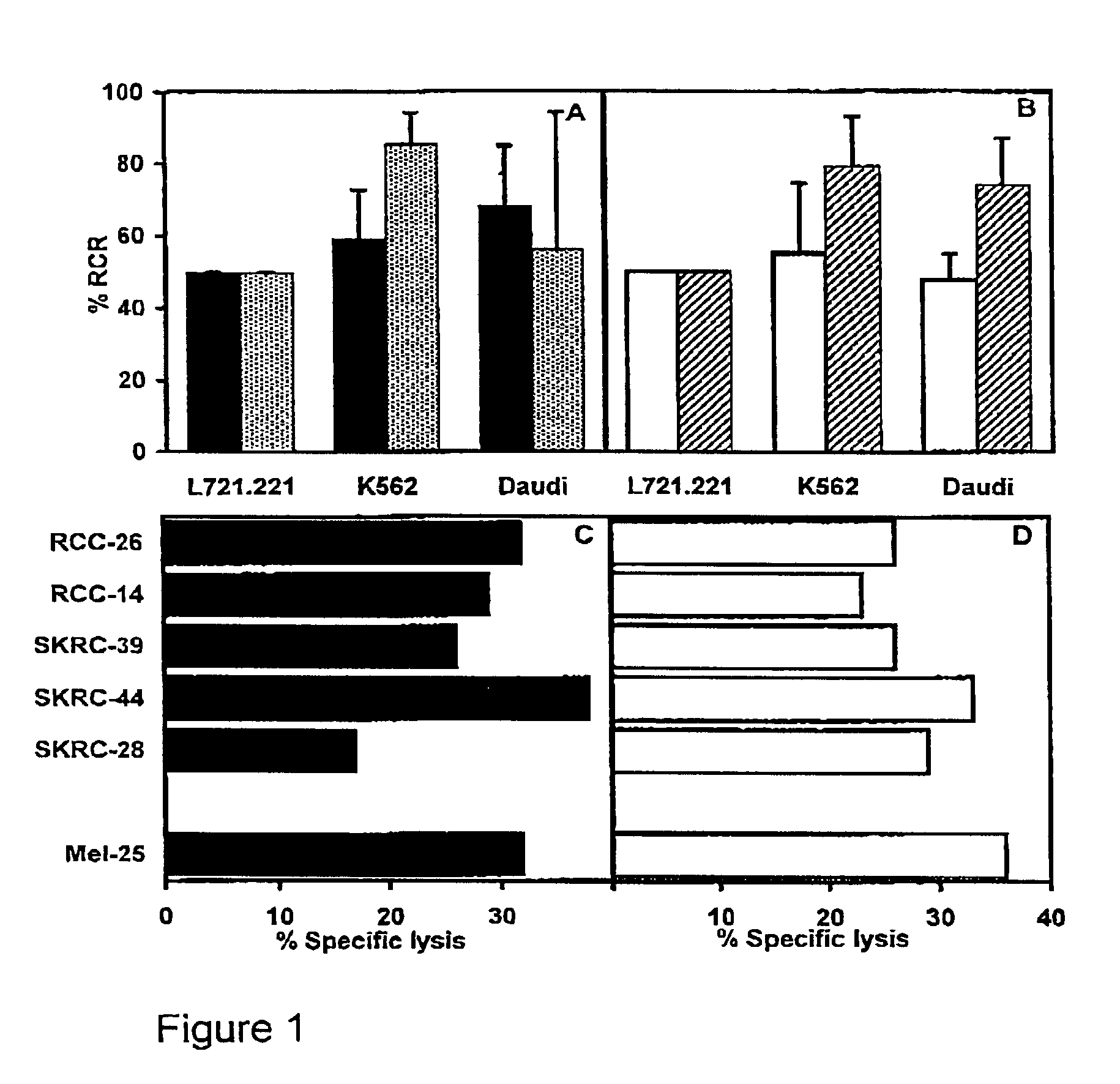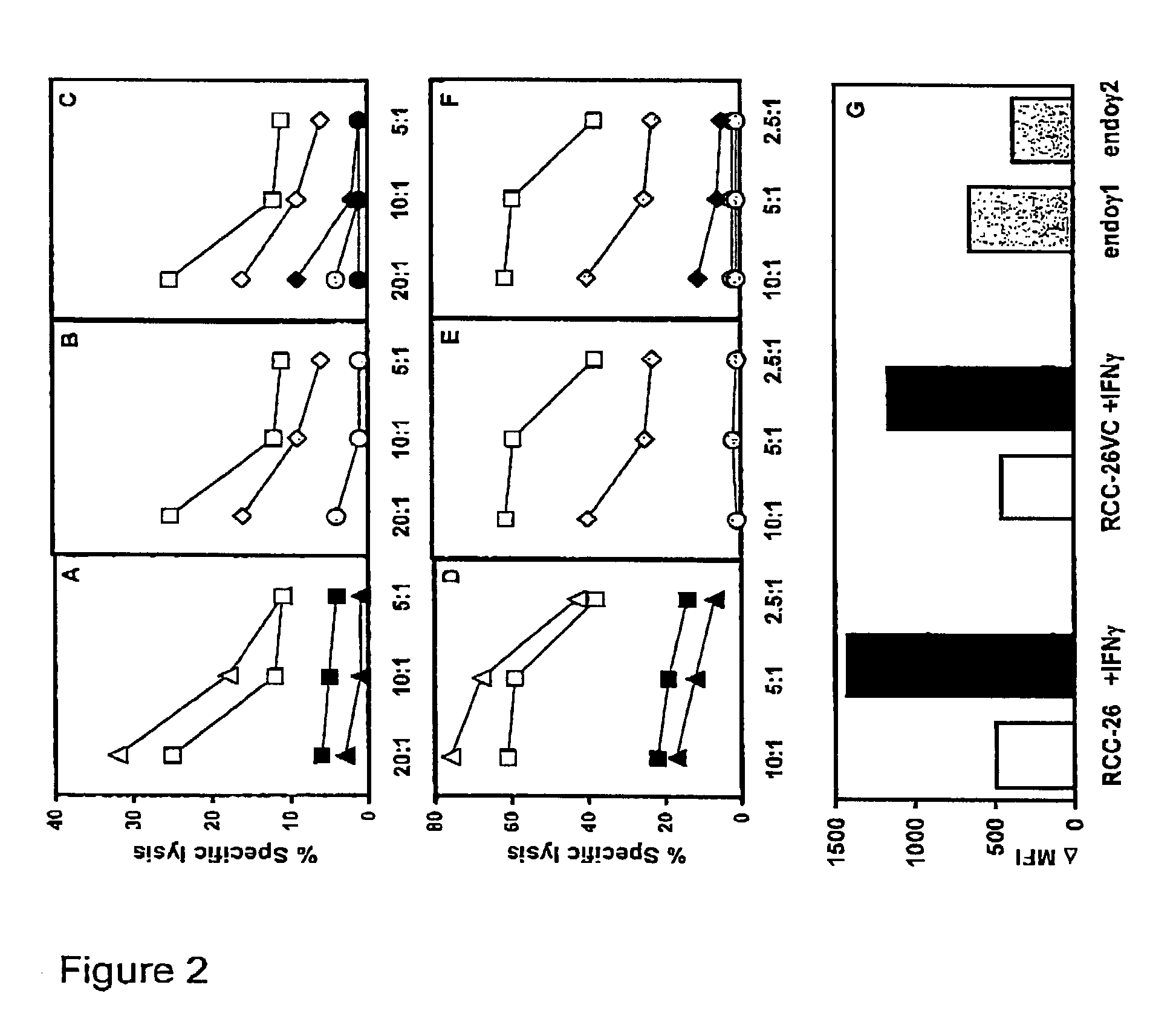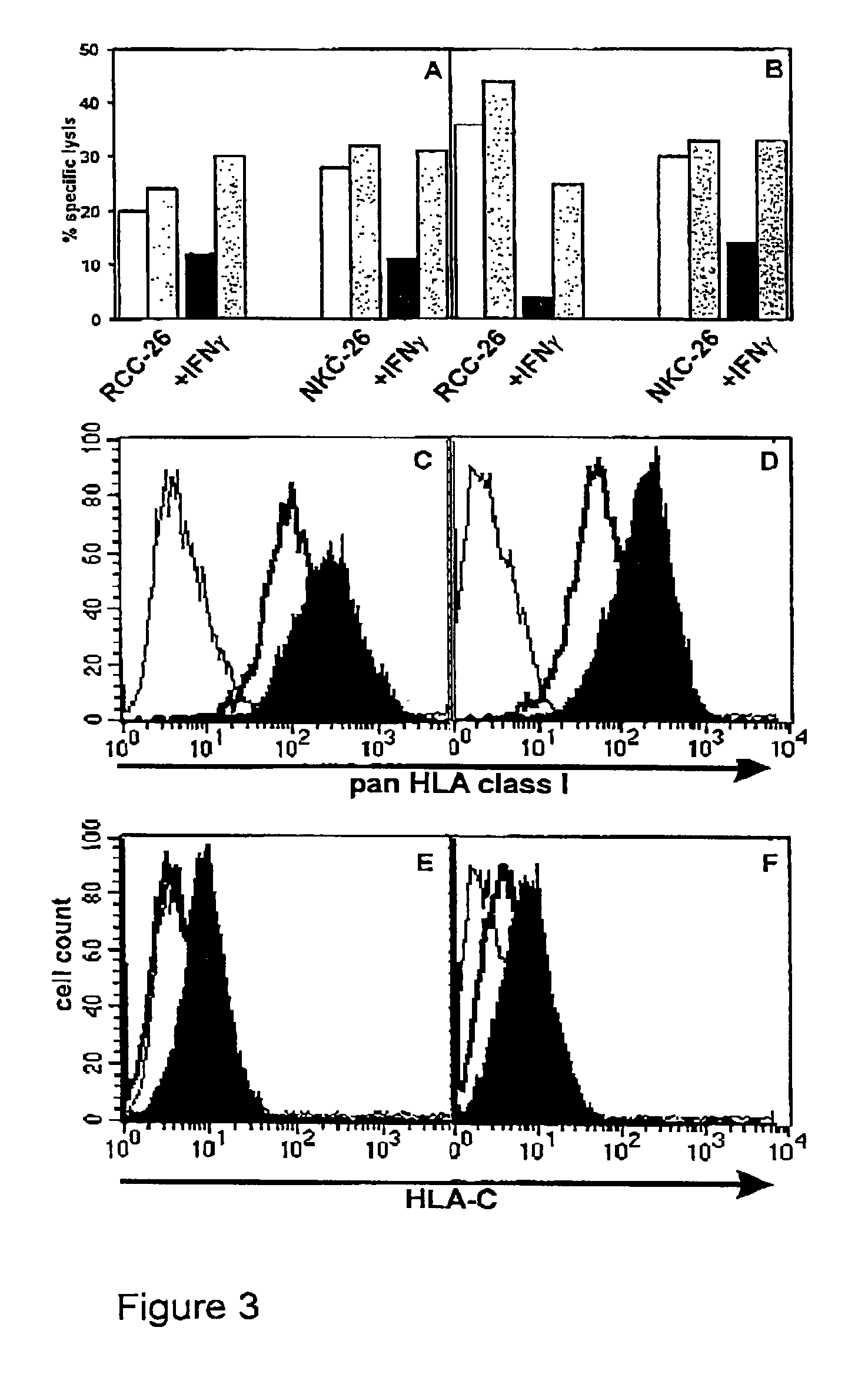Attack of tumor cells with missing, low or aberrant MHC expression by combining non MHC-restricted T-cells/NK-cells and MHC-restricted cells
- Summary
- Abstract
- Description
- Claims
- Application Information
AI Technical Summary
Benefits of technology
Problems solved by technology
Method used
Image
Examples
examples
[0075]The following examples are set forth for illustrative purposes and should not be considered as limiting the scope of protection of the present invention.
Generation of LAK Cells
[0076]Blood samples are obtained using either heparin (50 units / ml) (for example: Heparin-Natrium, Braun Melsungen AG) or defibrination to prevent coagulation. To obtain larger numbers of PBMC an apheresis can be performed to obtain the equivalent of 1-4 liters of blood (methods for blood preparation are described in (35).
[0077]Peripheral blood mononuclear cells (PBMC) are isolated by Ficoll / Hypaque (for example: Biocoll Separating Solution, Biochrom AG) density gradient centrifugation using standard methods (35).
[0078]PBMC are washed 2× in phosphate buffered saline (PBS) and cultured directly or cryopreserved for future use. For cryopreservation, PMBC are frozen at concentrations of 5-20×106 cells / ml in 1 ml aliquots in RPMI culture medium containing 25-50% autologous serum and 10% DMSO in RPMI 1640 med...
PUM
| Property | Measurement | Unit |
|---|---|---|
| Fraction | aaaaa | aaaaa |
| Fraction | aaaaa | aaaaa |
| Time | aaaaa | aaaaa |
Abstract
Description
Claims
Application Information
 Login to View More
Login to View More - R&D
- Intellectual Property
- Life Sciences
- Materials
- Tech Scout
- Unparalleled Data Quality
- Higher Quality Content
- 60% Fewer Hallucinations
Browse by: Latest US Patents, China's latest patents, Technical Efficacy Thesaurus, Application Domain, Technology Topic, Popular Technical Reports.
© 2025 PatSnap. All rights reserved.Legal|Privacy policy|Modern Slavery Act Transparency Statement|Sitemap|About US| Contact US: help@patsnap.com



